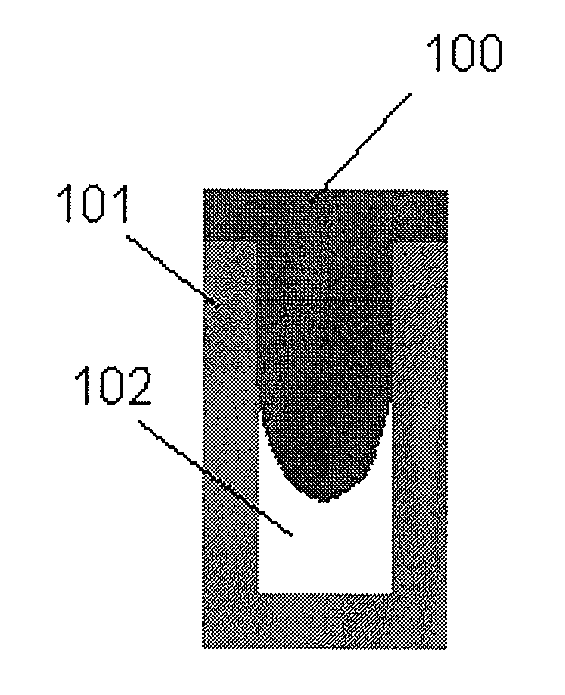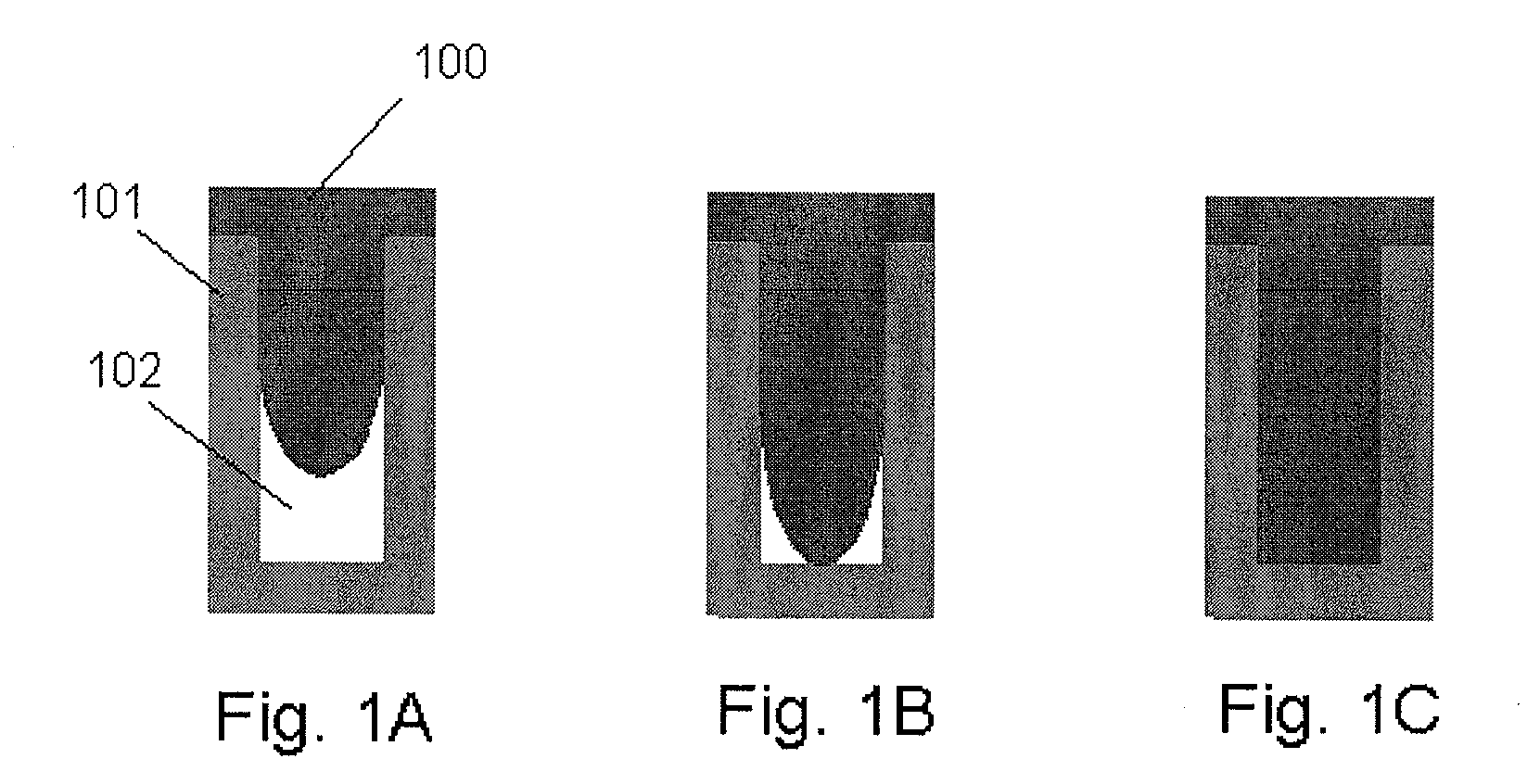Method for forming low-carbon CVD film for filling trenches
a cvd film, low-carbon technology, applied in the direction of solid-state diffusion coating, coating, energy-based chemical/physical/physical-chemical processes, etc., can solve the problems of poor chemical resistance, high leakage current, and other negative effects, and achieve the effect of reducing the quality of the film, reducing the cost of production, and improving the quality of the produ
- Summary
- Abstract
- Description
- Claims
- Application Information
AI Technical Summary
Problems solved by technology
Method used
Image
Examples
example
[0083]Experiments were conducted as described below. The results are indicated in tables below. In the tables, a downward pointing arrow indicates that the immediately overlying entry is carried over to the box containing the arrow. In these experiments, a plasma CVD apparatus (Eagle® 12, ASM Japan) shown in FIG. 4 was used.
[0084]An insulation film was formed on and filled in an irregular surface of SiN formed on a Si wafer (300 mm), the surface including a trench having a width of 20-500 nm (a depth of about 100-500 nm). UV treatment was conducted in the UV treatment apparatus shown in FIG. 5. Thermal treatment was conducted in the batch-type furnace chamber shown in FIG. 6. A wet etch evaluation was conducted as follows: After a film was deposited on a substrate and subjected to post deposition treatment, a trench filled with the film was vertically cut to show a vertical cross section of the trench and then submerged in an undiluted liquid of LAL500 (manufactured by Stella-Chemif...
examples 1 to 20
[0094]Film was filled under the conditions shown in Table 1. Recipe 1 in the table corresponds to the recipe shown in FIG. 8, recipe 2 corresponds to the recipe shown in FIG. 9 and recipe 3 corresponds to the recipe shown in FIG. 10. Under each recipe, the He flow rate in the gas setting step was 4 SLM and pressure was 533 Pa. In the initial film improvement step, the power output at the start of RF application was 50 W, which was then lowered to 30 W. The durations of respective steps were as follows: 20 seconds for the gas setting step (S1), 10 seconds for the initial film improvement step (S2) and 60 seconds for the film forming step (S3) under recipe 1; and 20 seconds for the gas setting step (S1), 10 seconds for the first period of the initial film improvement step (S2a), 10 seconds for the second period of the initial film improvement step (S2b) and 60 seconds for the film forming step (S3) under recipes 2 and 3. By the way, under recipe 3 the pulsing of material gas was repea...
PUM
| Property | Measurement | Unit |
|---|---|---|
| Temperature | aaaaa | aaaaa |
| Temperature | aaaaa | aaaaa |
| Temperature | aaaaa | aaaaa |
Abstract
Description
Claims
Application Information
 Login to View More
Login to View More - R&D
- Intellectual Property
- Life Sciences
- Materials
- Tech Scout
- Unparalleled Data Quality
- Higher Quality Content
- 60% Fewer Hallucinations
Browse by: Latest US Patents, China's latest patents, Technical Efficacy Thesaurus, Application Domain, Technology Topic, Popular Technical Reports.
© 2025 PatSnap. All rights reserved.Legal|Privacy policy|Modern Slavery Act Transparency Statement|Sitemap|About US| Contact US: help@patsnap.com



